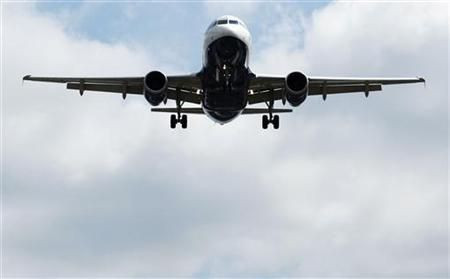Global airline profits likely to drop in 2011; but number of passengers to surge by 800-mln in 2014

Global airlines will likely earn less in 2011 than they did in 2010, due to higher fuel costs.
The International Air Transport Association (IATA) predicts total industry earnings of $9.1-billion in 2011, down substantially from $15.1-billion in 2010.
However, the global airline industry will also likely see 800-million more travelers by 2014, and more than a quarter of them will come from China.
IATA forecast that there will be 3.3-billion air travelers by 2014, up from 2.5-billion in 2009.
Nearly half (45 percent) of the new airlines passengers will travel on Asia-Pacific routes.
However, the United States will still be the largest individual country market for both domestic passengers (671 million) and international passengers (215 million).
In addition, the air cargo transported by global carriers will rise to 38-million tonnes from 26-million tones between 2009 and 2014.
“Despite some regional differences, the forecast indicates that the world will continue to become more mobile,” said Giovanni Bisignani, IATA’s Director General and CEO, in a statement.
“This creates enormous opportunities but also presents some challenges. In five years we need to be able to handle 800 million more passengers and 12.5 million more tonnes of international cargo. To realize the economic growth potential that this will bring, we will need even more efficient air traffic management, airport facilities and security programs. Industry and governments will be challenged to work together even more closely,”
Bisignani added that “the shadow of the global economic recession is expected to remain over parts of the industry for some time to come. Sluggish growth rates in Europe and North America are not only the result of being mature markets. Lingering consumer debts, high unemployment and austerity measures will dampen growth rates.”
The IATA also indicated that the number of international passengers will likely rise to 1.3 billion passengers in 2014 from 952 million in 2009.
The fastest growing markets for international passenger traffic will be China (10.8 percent), the United Arab Emirates (10.2 percent), Vietnam (10.2 percent), Malaysia (10.1 percent) and Sri Lanka (9.5 percent).
Also, by 2014, the top five countries for international travel measured by number of passengers will be the U.S. (at 215 million, an increase of 45 million), the United Kingdom (at 198 million, an increase of 33 million), Germany (at 163 million, an increase of 29 million), Spain (123 million, an increase of 21 million), and France (111 million, an increase of 21 million).
The number of domestic passengers is expected to rise from 1.5 billion in 2009 to over 2 billion in 2014.
By 2014 the five largest markets for domestic passengers will be the United States (671 million), China (379 million), Japan (102 million), Brazil (90 million) and India (69 million).
The Asia Pacific region’s international passenger demand is expected to grow 7.6 percent. Indeed, IATA added, by 2014, China, Japan and Hong Kong will be the biggest international passenger markets in the region, with China being the largest international and domestic market in Asia.
However, the Middle East is expected to have the fastest growth rate at 9.4 percent. The UAE, Kuwait, Jordan will be among the top 10 fastest growing countries, with the UAE ranked 7th for international passengers at 82.3 million.
“The focus of the industry continues to shift eastward,” Bisignani added. “By 2014, 1 billion people will travel by air in Asia Pacific. That’s 30 percent of the global total and a 4 percentage point increase from the 26 percent it represented in 2009. The same is true for cargo where Asia Pacific will account for 28 percent of global volumes.”
© Copyright IBTimes 2025. All rights reserved.





















